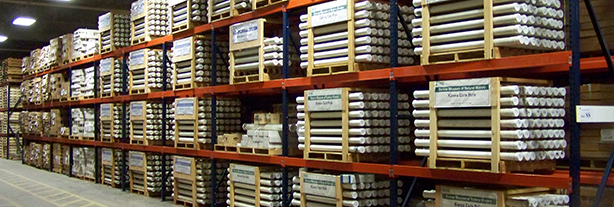The National Geological and Geophysical Data Preservation Program (NGGDPP) was established by the Energy Policy Act of 2005 with directives amended by the Infrastructure Investment and Jobs Act (IIJA) to

A world where all public domain physical samples and geological resources are readily discoverable, accessible and re-usable
The rebrand and redesign of the National Digital Catalog (NDC) to ReSciColl, the Registry of Scientific Collections, was developed by the NGGDPP with support from the Infrastructure Investment and Jobs Act (IIJA). ReSciColl is a central source of metadata records describing geoscience collections from state geological surveys and the U.S. Geological Survey (USGS). NGGDPP partners with states to preserve geoscience assets and to catalog them in ReSciColl. Using forms designed by NGGDPP, states can upload descriptive information about their collections to ReSciColl. Records in ReSciColl can be searched by the public, stakeholders, and scientists using the map on this website.